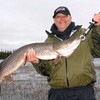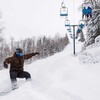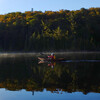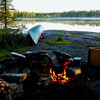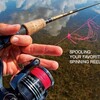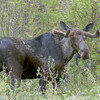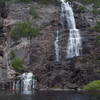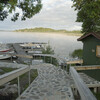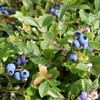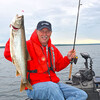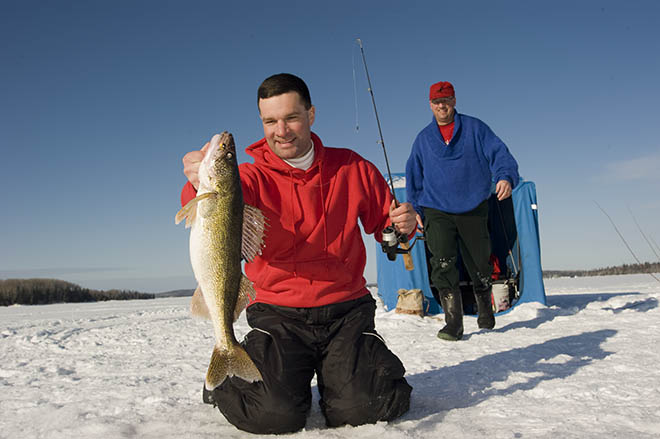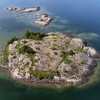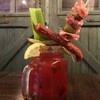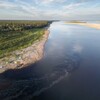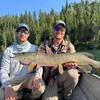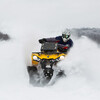
A Winter Ice Fishing Wonderland
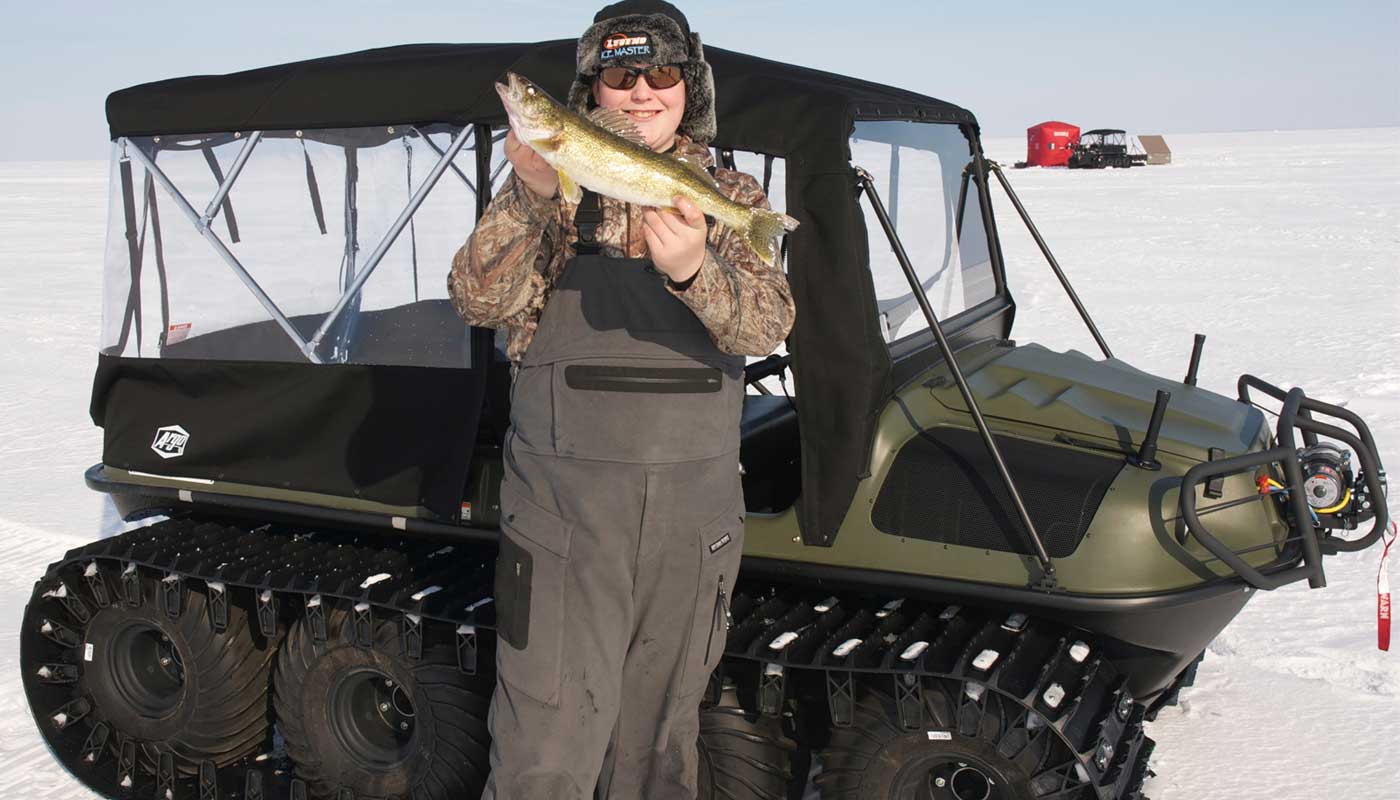
Ice and snow are a given for the people of Ontario who live in the tourism district known as Algoma Country. From the Manitoulin Islands in the east to Nakina in the west, Algoma Country is located in the heart of Ontario and along the northern edge of the snow belt.
Safe ice is generally set up by early December, and anglers can almost guarantee the ice fishing season will last through March. Ice and snow lock up Algoma Country for clearly a third of the year. In this part of the world, when the weatherman hands you lemons, you make lemonade or lemonade sickles, as the case may be.
Ice fishermen target a host of species in Algoma Country all winter long. The trout fishing season opens on January 1, and with that milestone comes opportunities to target both brook trout and lake trout. Walleye, northern pike, yellow perch, and whitefish are also plentiful and common targets for winter fishermen.
Trout Tactics
Anglers after either brook trout or lake trout will find that tip-ups baited with live minnows dominate the winter ice fishing scene. Most tip-up fishermen favour a coated braid that doesn't absorb water as the main line attached to a 6-foot leader of 10- to 15-pound test ultra-clear fluorocarbon line. At the terminal end, either a No. 2 single hook or a No. 6 treble hook and just enough split shots to sink the bait complete the tip-up rig.
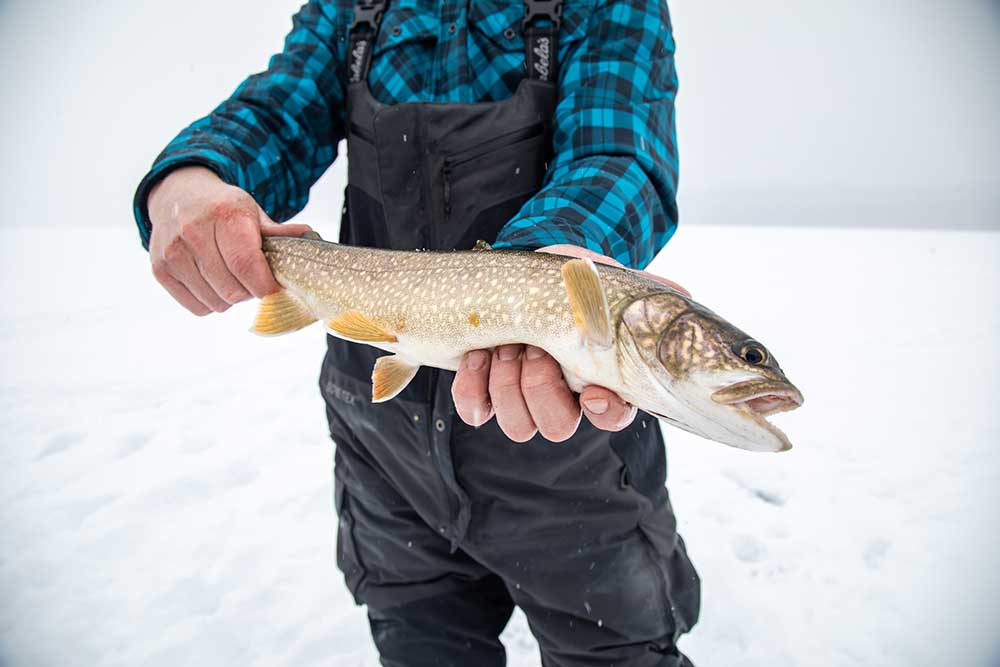
Brook trout favour shallow water and are most commonly found along rocky shorelines and near the tips of rocky points. Brook trout are most often caught in water 10 feet deep or less.
Lake trout favour deeper water in the wintertime and typically spend their days in the deeper basins of the lake. To locate lake trout, seek out water from 40 to 150 feet deep, using electronics to confirm the presence of fish.
Walleye Tactics
Walleye can be caught through the ice readily on tip-ups baited with live minnows and also by jigging with lead head jigs, jigging spoons, and jigging/swimming baits. Ontario law allows ice fishermen the luxury of two lines per person. Most anglers after walleye will set out a tip-up with one line and jig nearby with a second line.
Points that taper into deeper water and the mouth of tributary streams are prime spots to search for winter walleye.
Northern Pike Tactics
The tip-up is the most common fish trap used to ice northern pike across Algoma Country. Again, coated braid makes for the ideal main line for tip-up fishing. At the terminal end, a six-foot leader of 25- to 40-pound test fluorocarbon line helps to ensure against "bite offs".
A No. 2 treble hook baited with a 6- to 12-inch sucker minnow is considered standard equipment for winter pike fishing. Black bottom bays with 6 to 15 feet of water and plenty of cabbage weeds are great places to set out tip-ups for winter pike.
Yellow Perch Tactics
Yellow perch are found in most of Ontario's inland lakes. Ice fishermen target this species by using small jigging spoons tipped with either the head of a minnow or a wax worm for bait.
Aggressive feeders perch bite well all winter long. Usually, these fish are found near the bottom and often on mudflats where they feed on aquatic insects like mayfly larvae.
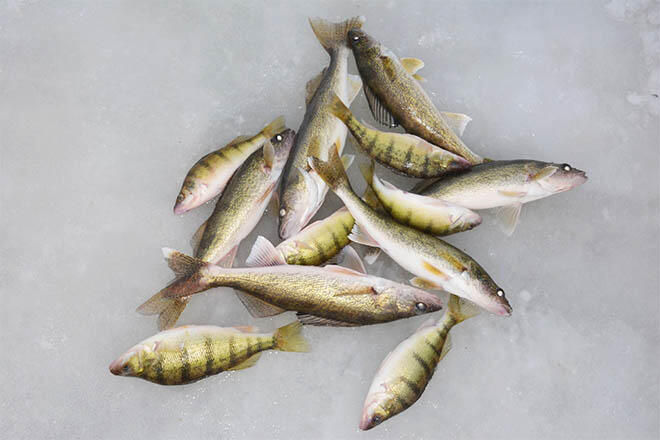
Whitefish Tactics
Relatives of the trout family, the lake whitefish is abundant on literally hundreds of Ontario lakes. Like lake trout, whitefish favour deep water during the winter months and are commonly found in 40 to 150 feet of water.
Jigging spoons tipped with the head of a minnow are the most common lure used to target whitefish. A growing number of anglers are also using jigging/swimming lures like the Jigging Rapala produced by Rapala and the Shimmering Minnow produced by Moonshine Tackle.
These baits are small in size, but heavy enough to fish in deep water. Let the bait free fall to the bottom, then reel up the slack line and jig near the bottom. Every few jigging strokes, drop the rod tip and allow the bait to crash bottom.
Ice Fishing Resources
Several resorts and businesses in Algoma Country remain open in the winter and cater to ice fishermen. Learn more at www.algomacountry.com
Recommended Articles

The Group of Seven in Algoma

9 Facts to Know about the Agawa Canyon Tour Train


